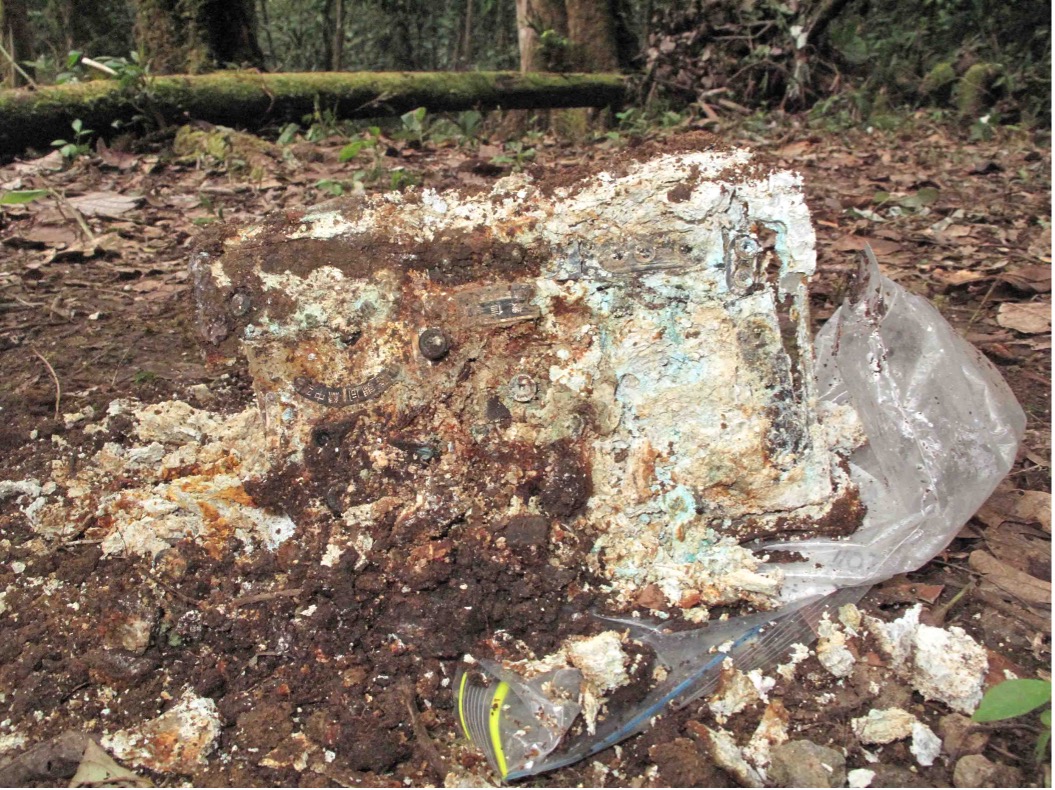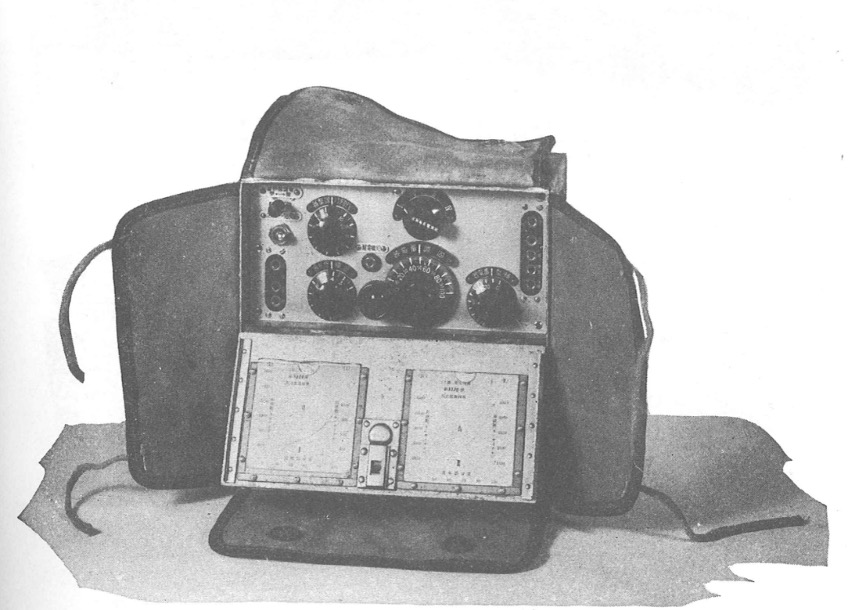In October 1942, during the Kokoda Campaign in Papua New Guinea (PNG), two Japanese soldiers died in a small pit in the Eora Creek valley opposing the Australian Army’s advance north. Archaeological work between 2011 and 2019 has recovered their remains, identified their role in the battle and more recently uncovered what probably killed these two young men.
An archaeological survey of the Etoa site, near Eora Creek, was undertaken in July 2011 with a team of six Australian archaeologists and members of the local community of Alola.[1] During that survey a small single man fighting pit (EB-11-1053) was excavated, by several villagers, and a number of artefacts were recovered from the fill. At the very base of the pit a large rectangular artefact was retrieved (Figure1). In addition, several small artefacts were also recovered which included, some lengths of cloth covered wire, Japanese 6.5 mm shell casings, live Japanese 6.5 mm rounds and the fragments of earpieces and microphones of a radio (Figure2). It was difficult to identify the large artefact as it was encased by the adhering soil matrix and corrosion. The obvious fragility of the artefact required the careful removal of successive layers of corrosion back at the camp to reveal what it was. With the soil etc. removed the remains of a Japanese Model 94 Type 5 Radio transmitter were exposed (Figure 3)



Previous historical research had revealed that the Australian Army had captured a Japanese radio during the October 1942 battle.[2] It appears therefore that the Australians dumped the captured transmitter into an empty weapons pit after recording its capture. However, the pit that had once contained the operators, receiver, power generator, as well as their associated equipment, had yet to be identified.
Eight years later, in August 2019, excavations were taking place in several weapons pits across the site of Etoa (see Figure 4).[3] One large pit was severely disturbed by massive root growth that entirely enveloped the contents. The partial remains of two bodies were exposed in this pit (EB-19-51). The paucity of skeletal remains precluded any attempt to identify the cause of these men’s death.

The artefacts recovered from within this pit included: an unexploded Australian No. 36 grenade; a Japanese bayonet, still in its scabbard; two morphine vials; buttons from a Japanese shirt; a clip of Japanese 6.5 mm rounds; a coiled length of fabric covered copper wire; and earpieces from a radio which matched some of those found in 2011. Here was the radio pit, with apparently the two radio operators lying where they had been killed, with remnants of their radio equipment. This pit was approximately 50 m south of pit EB-11-1053 which had the radio transmitter buried in it.[4]
Several additional artefacts were recovered of which some were easily identifiable while others took some more research to classify (Figure 5).The identifications included personal items such as a Seiko watch, equipment for servicing the radio, nails and screws from carrying boxes but one small metal fragment’s final identification provided the information on the probable way these radio men lost their lives. The fragment turned out to be the guide for a striker spring of an Australian No 36 Grenade. The force of the grenade’s explosion forces the thin tube to crush against the spring creating a characteristic spiral groove on the inside of the tube. This fragment indicated that an Australian grenade had exploded within the pit, no doubt killing or mortally wounding the occupants of the pit where they lay until 2019.

References
AHMS, 2011, Eora Creek, Stage 2, Final Report, report for the Lost Battlefield Trust.
AWM52 8/3/3/16, 2/3 Infantry Battalion War Diary July-December 1942, Canberra.
Curio Projects, 2019, Interim Report on Archaeological Work, August 2019, Etoa Battlefield, report for PNG National Museum and Art Gallery.
US War Department, 1944, Technical Manual TM-E 30-480, Handbook on Japanese Forces 1944, Washington.
[1]AHMS, 2011, Eora Creek, Stage 2, Final Report, report for the Lost Battlefield Trust.
[2]2/3 Infantry Battalion War Diary July-December 1942.
[3]The current work is being undertaken in association with the PNG National Museum and Art Gallery (NMAG) and the Japanese Association for Recovery and Repatriation of War Casualties(JARRWC),CurioProjects,2019,Interim Report on Archaeological Work, August 2019, Etoa Battlefield, report for PNG National Museum and Art Gallery.
[4]The larger radio receiver unit and hand crank power generator are yet to be found.

